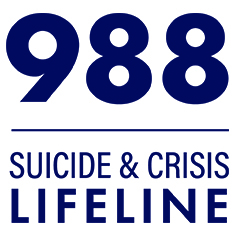Preventing Suicide among Men in the Middle Years
December 02, 2016

In gatekeeper training, we learn to ask a hard question: Have you been thinking about suicide? I would like to invite you to ask another hard question: What about men in the middle years?
I had not thought much about this population when I began working as a psychiatrist. Gradually, I realized that many of my patients were men between 35 and 64 years of age with many of the major risk factors for suicide—mental disorders, medical problems, alcohol and drug use disorders, homelessness, family conflict, unemployment, social isolation, histories of violence, and previous suicide attempts. Although we successfully treated many of these patients, my team and I also had patients die by suicide, despite our best efforts to provide them with effective treatment, care, and support. I also noticed that a large number of these men died unmourned, with no grieving friends or family members in evidence.
Eventually, I learned that these “men in the middle years” account for the highest proportion of suicide deaths in the United States. In searching for research and best practices that might improve our clinical success rate, I came to the same conclusion reached by a 2003 Scientific Consensus Conference, that “suicide research related specifically to men in the middle years is virtually non-existent” (Caine, 2003).
Why would there be so little research on the group that accounts for 40 percent of the suicide deaths in the U.S.? Some men have avoided attention. Despite supportive families, friends, and colleagues, these men have concealed their suffering to avoid burdening others. For other men, “perceived burdensomeness” has become “confirmed burdensomeness” through indictments from friends, family, or the criminal justice system. For example, in his seminal article “Forging an agenda for suicide prevention in the United States,” Dr. Eric Caine reported that suicide deaths among men in the middle years often:
. . . reflect long-standing problems that snowball over the course of time, involving persistent or recurrent drinking or drug use, family turmoil and violence, problems with employment, emerging or worsening depression, and gradual social and functional decline. . . . Although absent from the clinical arena, they frequently have been encountered by the police and in courts and assessed by social service agencies, or they have come to the attention of their employer for inadequate work performance. Many do not elicit sympathetic responses from their families, spouses, or children: they burn their bridges and have disruptive life experiences not long before death (Caine, 2013).
Research findings in this area highlight the nature of the problem. Almost 41 percent of men aged 35 to 64 who attempted suicide were arrested and booked for a criminal offense in the 12 months before the attempt. Thirty-eight percent of men aged 40 to 65 who died by suicide had experienced intimate partner problems, often as perpetrators of domestic violence. Thirty-nine percent were dependent on alcohol or had another substance use disorder. These men have typically eluded conventional suicide prevention efforts: 70 percent of men in the U.S. aged 40 to 65 who died by suicide were not being treated for a mental health disorder. More than half of suicide deaths among men in the middle years are associated with firearms.
Given the number of suicide deaths among men aged 35 to 64, it will not be possible to reduce the overall suicide rate without reducing the rate of suicide in this population. To do this, we need to answer some hard questions:
• How will we reach men who do not seek treatment?
• Will we extend our compassion to those who “do not elicit sympathetic responses?”
• When a man dies an unmourned suicide death, who are the loss survivors to tell his story and call us to action?
• How can we intervene earlier to avoid self-destructive trajectories?
At the 2016 American Association of Suicidology Conference, I participated in a presentation titled “Men in the Middle Years: The Invisible Majority.” Concluding our talk, Eileen Zeller of the Substance Abuse and Mental Health Services Administration said, “We came looking for answers, and instead we found opportunities.” I am grateful to have participated in two of these opportunities: a report by the Suicide Prevention Resource Center (SPRC) titled Preventing Suicide among Men in the Middle Years: Recommendations for Suicide Prevention Programs and a short video on men in the middle years, which can be viewed on SPRC’s website. In the field of suicide prevention, we have learned that to find answers or opportunities, we must first ask hard questions. I invite you to ask the question: What about men in the middle years?
References
Caine, E. (2013). Forging an agenda for suicide prevention in the United States. American Journal of Public Health, 103(5), 822–829.
Caine, E. (2003, June 11–12). Preventing suicide, attempted suicide, and their antecedents among men in the middle years of life (ages 25–54 years). Executive summary of the University of Rochester Center for the Study and Prevention of Suicide Scientific Consensus Conference, Washington, D.C. Retrieved from http://www.sprc.org/sites/sprc.org/files/library/middle_years.pdf
